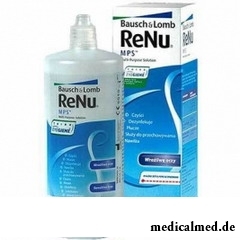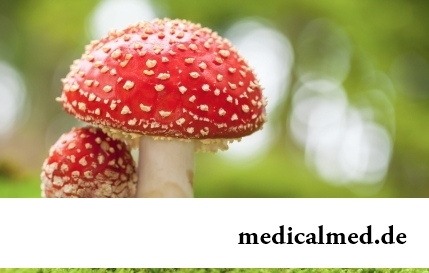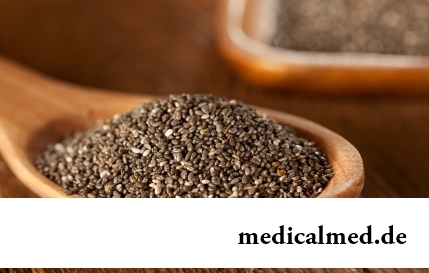





Polyvinylpirrolidone
Polyvinylpirrolidone – water soluble polymer from N-vinylpyrrolidone monomer, also known as поливидон or povidone.
also known as поливидон or povidone.
Polyvinylpirrolidone was for the first time synthesized by Walter Reppe, and the patent for it was registered in 1939 as on one of the most interesting derivatives of acetylene in chemistry. Polyvinylpirrolidone was originally used as blood plasma substitute, and then found application in the most various industries of medicine, pharmacy, cosmetology and industrial production.
Properties of polyvinylpirrolidone
We will dissolve polyvinylpirrolidone in water and other polar solvents. Polyvinylpirrolidone in a dry form has an appearance of the white or light yellow puff hydroscopic powder which is easily absorbing up to 40% of the weight in atmospheric water.
Molecular formula of polyvinylpirrolidone – C6H9NO, molar weight – 2.500 - 2.500.000 grams/mol, density – 1,2 g/cm ³, melting temperature – 150-180 °C.
Polyvinylpirrolidone use
In medicine polyvinylpirrolidone was used as blood plasma substitute after 1950. Now it is used as binding substance in many pharmaceutical tablets, it is easily dissolved in water and alcohol, and also due to formation of water-soluble complexes improves solubility and bioavailability of medicinal substances (chemotherapeutic means, analgetics and antibiotics).
Polyvinylpirrolidone with addition of iodine forms a complex, the called povidone-iodine having disinfecting properties. This complex is used in various medicines and hygienic means, such as solutions, ointments, vaginal suppositories, liquid soaps and surgical srubs.
Polyvinylpirrolidone also has broad use in quality:
- Glue in glue pencils and thermofusible glues;
- Special additive for batteries, ceramics, fiber glasses, ink and papers for an inkjet printing;
- Emulsifier and baking powder for polymerization in solution;
- Permission enlarger in photoresist of electron beam tubes;
- Element for production of membranes, such as dialysis and filters for water purification;
- The binding agent and kompleksoobrazovatel in the agro-industrial industry, such as culture of protection, treatment and covering of seeds;
- Thickener in the bleaching tooth gels;
- Supportive application for increase in solubility of drugs in liquid and semi-fluid dosage forms (syrups, soft gelatin capsules) and as recrystallization inhibitor.
Polyvinylpirrolidone is also used in solutions for contact lenses and in personal hygiene means, such  as shampoos, shower gels, hair conditioners, body scrubs, toothpastes, varnishes and hair gels.
as shampoos, shower gels, hair conditioners, body scrubs, toothpastes, varnishes and hair gels.
In the food industry the stabilizing properties polyvinylpirrolidone allow to use it as E1201 nutritional supplement which is a glazirovatel, sweetener, a baking powder and the regulator of acidity.
The adsorbing properties polyvinylpirrolidone allow to use it as a part of means for an organism detoxication.
Polyvinylpirrolidone is applied to processing of wine materials and can be applied to bodying of drinks, clarification of white wine and some grades of beer.
In molecular biology polyvinylpirrolidone is used as the blocking agent in Sauzern-blot the analysis as a component of solution of Denkhardt.
Harm polyvinylpirrolidone
As a rule, polyvinylpirrolidone is considered safe and does not cause serious side effects, however cases of allergic reactions to polyvinylpirrolidone, especially concerning its hypodermic use and situations when polyvinylpirrolidone comes into contact with autologous serum and mucous membranes were recorded.
The most high temperature of a body was recorded at Uilli Jones (USA) who came to hospital with a temperature of 46,5 °C.

The phenomenon of improvement of a condition of the patients at administration of drugs who are not containing active agents, so-called effect of placebo is known...
Section: Articles about health
Mushrooms - the surprising inhabitants of our planet having a set of wonderful qualities. Thanks to one of them, a mold mushroom of Penicillium notatum, the first natural antibiotic - penicillin was received nearly 80 years ago. The mankind is obliged to this opening миллио...
Section: Articles about health
Long time antibiotics were considered as a panacea from all diseases and were appointed even at insignificant symptoms of an infection. Even now not everyone knows in what force of antibiotics how and when they should be accepted. Let's discredit 7 popular myths about such drugs....
Section: Articles about health
Run - one of the most available and effective ways to revitalize the organism. Knowing about its extraordinary advantage, each of us though...
Section: Articles about health
Among a set of the perfumery and cosmetic goods which are released today the special group is made by the means containing antibacterial components. Such types of gels, shampoos, soaps, creams, lotions and other products are positioned by manufacturers as a panacea...
Section: Articles about health
For anybody not a secret that the modern person eats not as his ancestors. For the last 100 years in broad access there were absolutely new products which are result of use of the latest technologies in food production. Significantly ways of storage and transportation of food ingredients changed, and people of the whole world had an opportunity to regularly use those products about which their grandfathers and grandmothers did not even know....
Section: Articles about health
Physical activity is necessary for normal functioning of a human body. At a lack of the movement cease функц...
Section: Articles about health
Olive oil – the product capable to make a powerful contribution to health of the person if it includes it in the diet. The rich vitamin composition of oil does it by a product number one from many diseases including from deadly. Only two tablespoons...
Section: Articles about health
Traveling all over the world, many try to try the most exotic dishes of national cuisines. There is even a so-called gastronomic tourism which, according to gourmets, not only allows to receive new feelings, but also is capable to show life of other people from absolutely unexpected side....
Section: Articles about health
Climax - process of fading of reproductive function of an organism in process of its aging. At women the main sign of its approach showing...
Section: Articles about health
On health of the person physicians know about salutary action of animals long ago. About 7 thousand years ago great Hippocrates recommended to the patients riding walks for strengthening of a nervous system and increase in vitality....
Section: Articles about health
Life of the modern child is extremely active and difficult. Information strain which is experienced by the school student and did not dream pupils of last times. Careful parents, wishing well to the children, will organize a set of additional classes in circles, sports sections and music schools. In such situation the child needs continuous care and good nutrition to keep health and high performance....
Section: Articles about health
80% of women at least once to lives complained of discomfortable feelings to breasts, consolidations and nagrubaniye. These are mastopathy symptoms. Mas...
Section: Articles about health
The healthy nutrition is the invariable principle of health and good health for long years of the woman. Nevertheless, in a diet at each stage of life there are the features allowing to support an organism by those substances which are most necessary...
Section: Articles about health
Partial and the more so full loss of hearing significantly reduces quality of life. Difficulties with communication lead to loneliness and isolation. The person who badly hears experiences difficulties with social and professional implementation, quite often has problems in private life....
Section: Articles about health
We live during an advertizing era. Daily each person receives a solid portion of persuasive councils about what to eat to be здо...
Section: Articles about health
When overcomes feeling of hunger, and an opportunity to have dinner fully is absent, having a snack − the meals, small on volume, stabilizing sugar level in blood comes to the rescue. The relation of nutritionists to having a snack is more often negative, but only because in кач...
Section: Articles about health
Reactive pancreatitis - the disease which is characterized by inflammatory process in a pancreas which arises most often because of excess activity of digestive enzymes. It − the emergency state which treatment has to take place in surgical department under control of doctors. The acute inflammation of gland can become the reason of its transition to a chronic form, and also development is purulent - necrotic pancreatitis which the extensive necrosis of fabrics can follow. Zabolev...
Section: Articles about health
Visit of doctors – business not the most pleasant, and many people do not hurry to undergo necessary planned inspections. Such behavior...
Section: Articles about health
Each woman has preferences in the field of use of those goods which help us to look good, feel young and effective. Besides: selection process of favourite perfume, shampoo or decorative cosmetics already lifts a spirit...
Section: Articles about health
The chia plant, or the Spanish sage, is from South America. The indigenous people of the continent since ancient times used its seeds in food: small, but very nutritious kernels, in a form the reminding fasolina. Indians knew about useful properties of seeds of a chia, and applied them to maintenance of vitality and increase in endurance before serious exercise stresses....
Section: Articles about health
Shops of household appliances offer us the huge choice of various devices for the house. Whether there are among this abundance devices which...
Section: Articles about health
For anybody not a secret that our country is one of the most "drinking" in the world. At clear understanding that the use of hard alcoholic drinks – occupation extremely harmful, most of Russians belong to alcoholism with unjustified loyalty. These...
Section: Articles about health
The naturopathy sometimes moves as the new direction of medicine, something like fashionable hobby, and there is nothing farther from the truth. This most ancient direction, the word "naturopathy" is translated as "treatment by the nature", and, no doubt, treatment by natural gifts was the first and only, available to the person in ancient times. Despite modern achievements of medicine, the naturopathy remains urgent and today, anyway the person - a part of the nature, and природн...
Section: Articles about health
The brain of the person is studied not one hundred years, but the quantity of the riddles connected with this body increases rather, than reducing...
Section: Articles about health
The unpleasant feelings connected with spring breakdown are familiar almost to each of us. Often happens that in March-April on the person weakness leans: he suffers from drowsiness, complains of bad mood, loss of interest in life and failures in affairs....
Section: Articles about health
History of mankind contains several tens of epidemics whose emergence was compared by eyewitnesses and historians to doomsday. The most terrible of them claimed the lives of millions of people, having made even the whole people to the person of the earth. What they − the diseases striking terror? Whether it managed to the person to find treatment, or he is still powerless before forces of nature?...
Section: Articles about health
